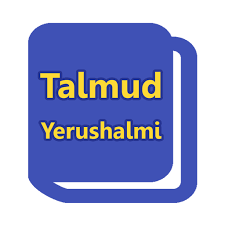Onen (אונן) Between Death and Burial (02) – The Yerushalmi that Drives the Halakhic Discourse

There are times when a specific passage in the Talmud Yerushalmi gets pulled into the flow of Halakha and sets the tone for the subsequent discourse. In the case of the onen there is a powerful sugya from the Yerushalmi that is brought by the Tosafot1and ultimately defines the parameters of the Halakhic conversation. Because of the importance of this text, we will analyze it piece by piece.
We begin with a simple drasha that removes the onen from the category of Mitzvot:
תלמוד ירושלמי (וילנא) מסכת ברכות פרק ג
א”ר בון כתיב לְמַעַן תִּזְכֹּר אֶת יוֹם צֵאתְךָ מֵאֶרֶץ מִצְרַיִם כֹּל יְמֵי חַיֶּיךָ (דברים טז:ג)
ימים שאת עוסק בהן בחיים ולא ימים שאת עוסק בהן במתים.
Yerushalmi, Berachot 3
Rebbi said, “It is written in order that you remember the day of the Exodus from Egypt all the days of your life (Devarim 16:3) –
Days when you are involved with life, and not days in which you are involved with death.
This Midrash makes a blanket statement that only days that are filled with life are meant to be days of Mitzvot. However, days in which a person is, “עוסק בהן במתים – involved with those who are dead” are simply not days to do Mitzvot. This is a strong statement about the nature of a life imbued with Mitzvot.
The Yerushalmi then explicitly says that the exemption from Mitzvot is meant as a prohibition and does not leave the decision up to the onen:
| It was taught: If he wanted to be stringent on himself [and perform Mitzvot] we do not allow him. | תני אם רצה להחמיר על עצמו אין שומעין לו |
Given the strength and clarity of this statement, one is left wondering why Rashi and Rambam were willing to read the exemption as a permission rather than a mandate (see last week’s installment). The next section may help to shed some light on the assumptions.
Following this statement, the sugya asks the “why” question, offers two reasons and gives an example of a case where only one reason applies:
למה? מפני כבודו של מת או משום שאין לו מי שישא משואו
מה נפיק מביניהן? היה לו מי שישא משואו
ואין תימר מפני כבודו של מת אסור
ואם תאמר מפני שאין לו מי שישא משואו הרי יש לו מי שישא משואו
And why [should the onen be exempt from the positive commandments]? Because of the appropriate honor due unto the person who has passed away or because he [the onen] has no one to carry his burden?
What is the difference between [these two reasons]? If he had someone to take care of the burden. If we say that the exemption [from positive mitzvot] is because of the appropriate honor due unto the person who has passed away, then [even if there is someone to carry the burden] he [the onen] may still not observe the commandments. And if we say that the exemption [from positive mitzvot] is because there is no one else to carry the burden, behold he has someone to carry the burden [and he should be obligated in the mitzvot]!

The Yerushalmi never really decides or clarifies which reasoning is formally accepted for the onen’s exemption from Mitzvot – ישא משואו (carry the burden) or כבודו של מת (honor due to the one who has passed). In fact, this tension runs throughout the entire history of Halakha.
There is an additional ambiguity that we need to raise. The text uses a very physical phrase to describe the involvement of the onen in the burial process, “שאין לו מי שישא משואו – he has no one to bear the burden.” One senses that this phrase refers to the physical need to prepare the tachrichin, fashion a coffin and engage in burial. What about a person who is not really directly involved with all of those practical arrangements but is still thinking about the loss of a loved one in preparation for the delivery of a eulogy? Is that person also considered an onen?
The sugya concludes:
נמסר לרבים אוכל בשר ושותה יין.
נמסר לכתפים כמי שנמסר לרבים.
Once the person who has passed away has been handed over to the public, the mourner may eat meat and drink wine [he is no longer considered an onen]. Once the person who has passed away has been handed over to the katafim [those who physically shoulder and carry the burden] it is like being handed over to the public.
Given that the sugya concludes with a statement about the physical burdens of burial, one might think that the gemara is leaning in this direction. This passage – together with the three positions of the rishonim that we saw last week, will help us to unpack the Shulchan Aruch next week. Stay tuned!